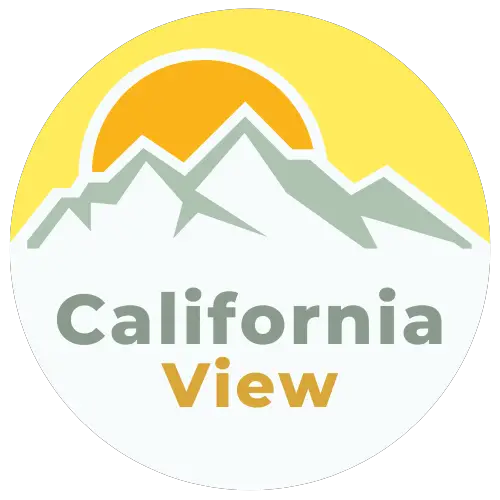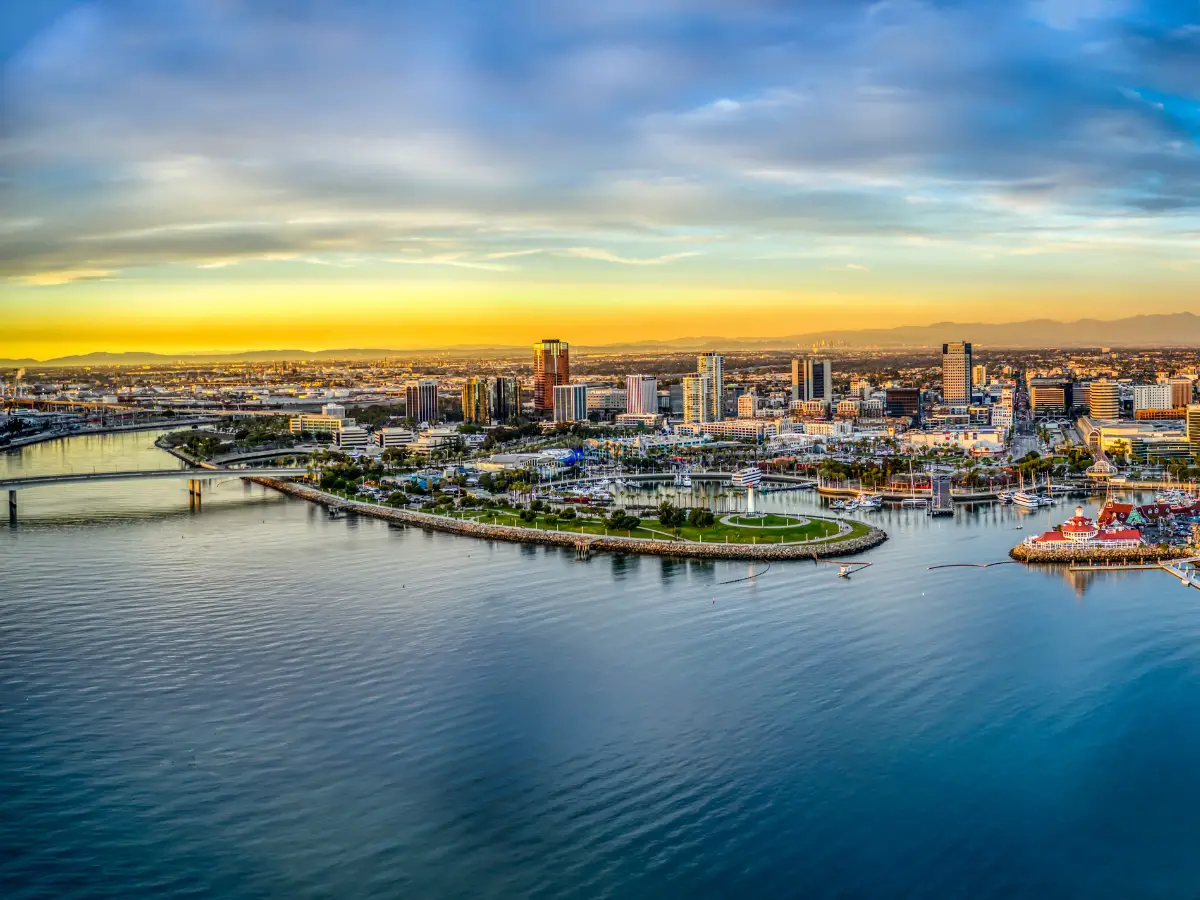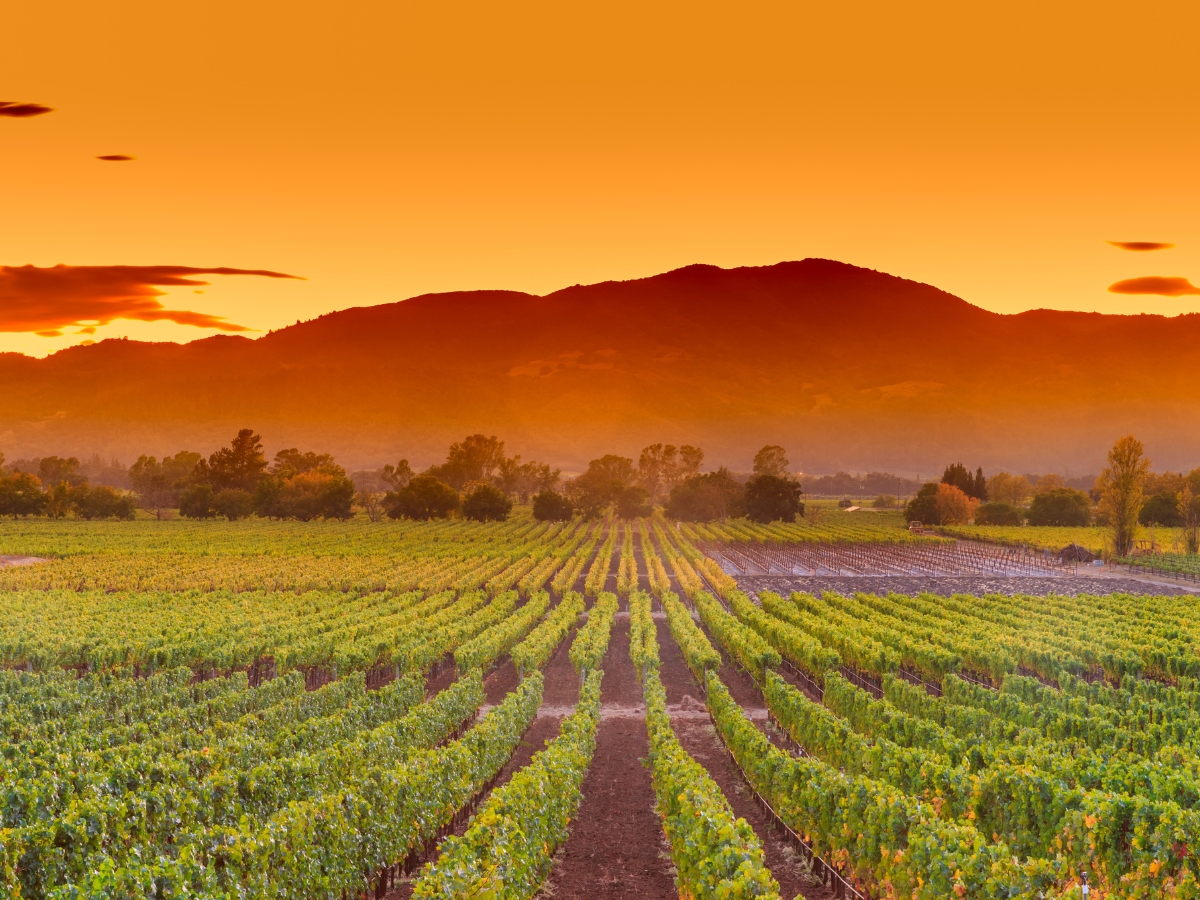California is a state located on the west coast of the United States. It is known for its diverse culture, beautiful landscapes, and booming economy. However, there is often confusion regarding whether California is in the northern or southern part of the state.
To clarify, California is divided into two regions: Northern California and Southern California. The dividing line is generally around the central part of the state, with Southern California located below San Luis Obispo and Northern California occupying the San Francisco Bay Area and everything above it, up until the Oregon border. Each region has unique characteristics, from the weather to the culture, making it essential to understand the distinction between them.
In this article, we will explore the differences between Northern California and Southern California, including their geography, climate, culture, and attractions. By the end of this article, you will better understand the two regions and be able to identify which part of California you are in or planning to visit.
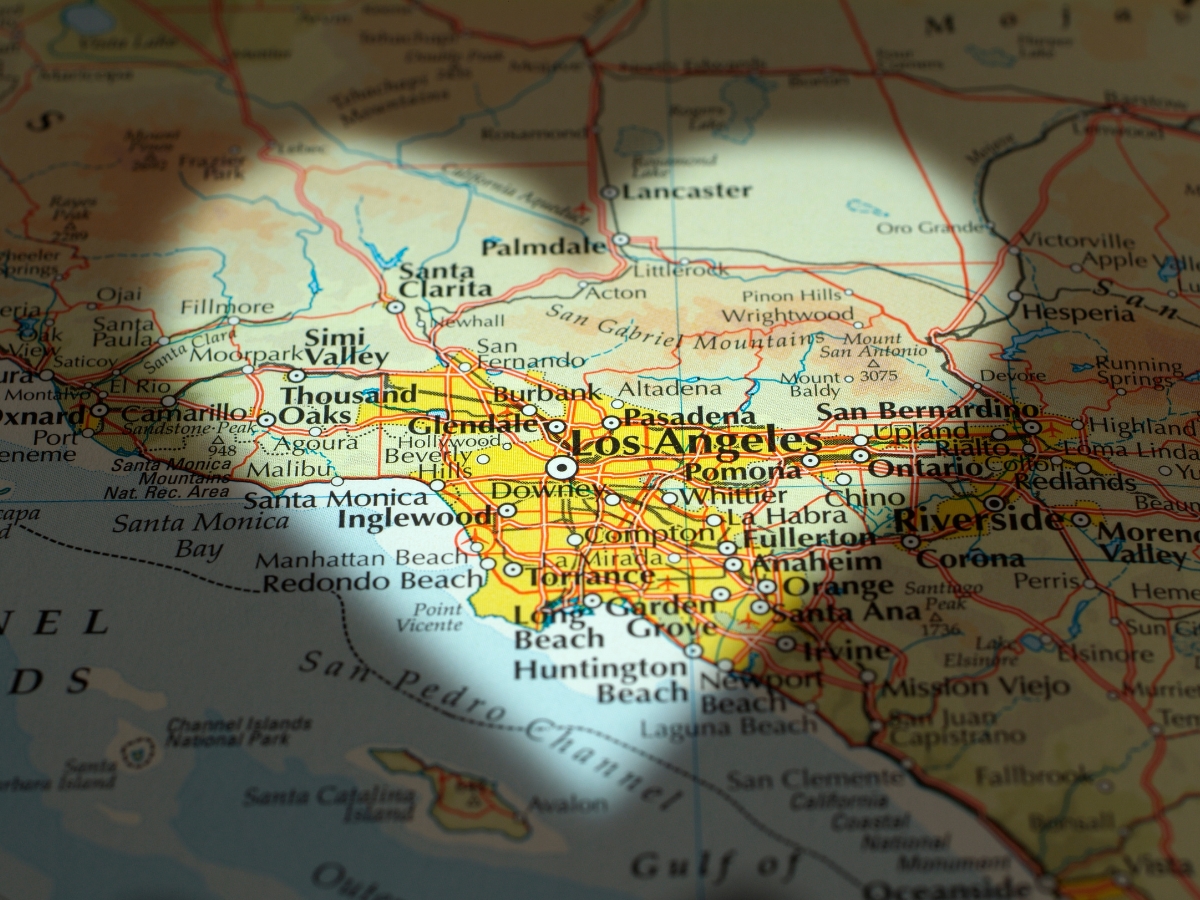
Geographical Position of California
California is located on the west coast of North America, bordered by Oregon to the north, Nevada, Arizona to the east, and Mexico to the south. It covers an area of 163,696 square miles, making it the third largest state in terms of size behind Alaska and Texas.
The state of California stretches almost 800 miles from north to south and is home to a diverse topography and contrasting landscape. The Coast Ranges rise from the shore along much of the coast in steep cliffs and terraces. The general coastline is 840 miles long, with the famous San Francisco Bay located in the northern part of the state.
California is also home to several islands, including the Channel Islands, which are located off the state’s southern coast. These islands are known for their unique ecosystems and are popular tourist destinations.
The state’s highest point is Mount Whitney, located in the Sierra Nevada mountain range and is 14,505 feet above sea level. The lowest point in California is Death Valley, located on the state’s eastern side and is 282 feet below sea level.
California is bordered by the Pacific Ocean to the west, which provides the state with a mild climate and a variety of marine life. The ocean is also home to several famous beaches and surfing spots.
In summary, California is located on the west coast of North America, with a diverse topography and contrasting landscape. Several states and Mexico border it, and is home to several islands and the famous San Francisco Bay. The Pacific Ocean borders the state to the west, providing a mild climate and a variety of marine life.
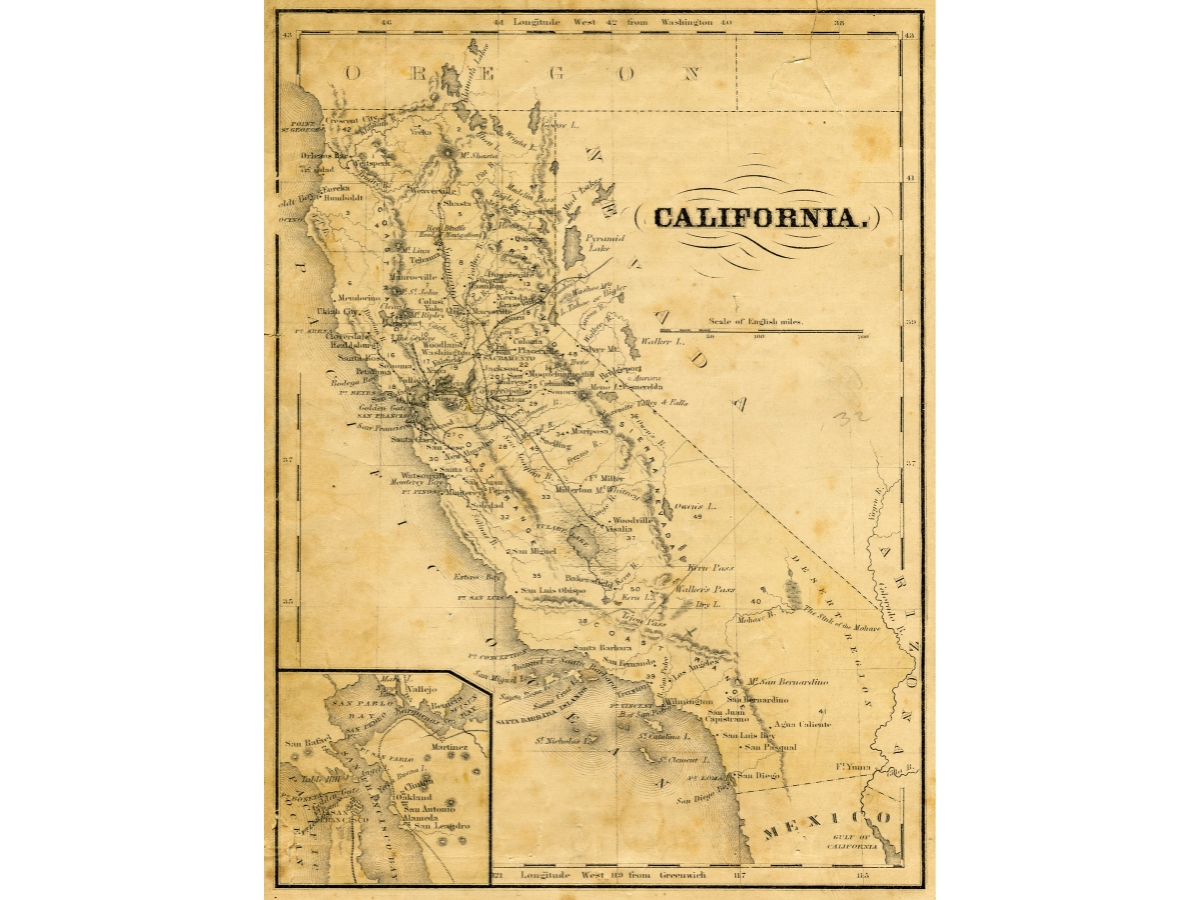
North and South California
California is located in the western United States, divided into three regions: Northern, Central, and Southern California. The boundary between Northern and Southern California is generally considered the northern border of San Luis Obispo, Kern, and San Bernardino counties.
Northern California
Northern California is a region that comprises the northern part of the state, and it is not a formal geographic designation. The region’s mid-way division is around 37°N, near Morgan Hill. It includes the San Francisco Bay Area, Sacramento, and the Sierra Nevada mountains. The region is known for its diverse landscapes, including forests, mountains, lakes, and beaches.
Southern California
Southern California is a region that generally comprises the southern portion of the state. It is located below San Luis Obispo and borders Tijuana, Mexico, to the south. The region includes Los Angeles, San Diego, and the Inland Empire. It is known for its warm climate, beaches, and entertainment industry.
In terms of climate, Northern California is slightly cooler than Southern California, with average highs between 70 and 75 degrees and average lows between 47 and 50 degrees. Southern California sees average highs between 75 and 78 degrees and average lows between 52 and 56 degrees. Northern California experiences an average of 259 sunny days in San Francisco.
Overall, Northern and Southern California have their unique characteristics, and the boundary between the two regions is not always clear-cut. Central California, located between the two regions, also has its distinct features, including agriculture and wine production.
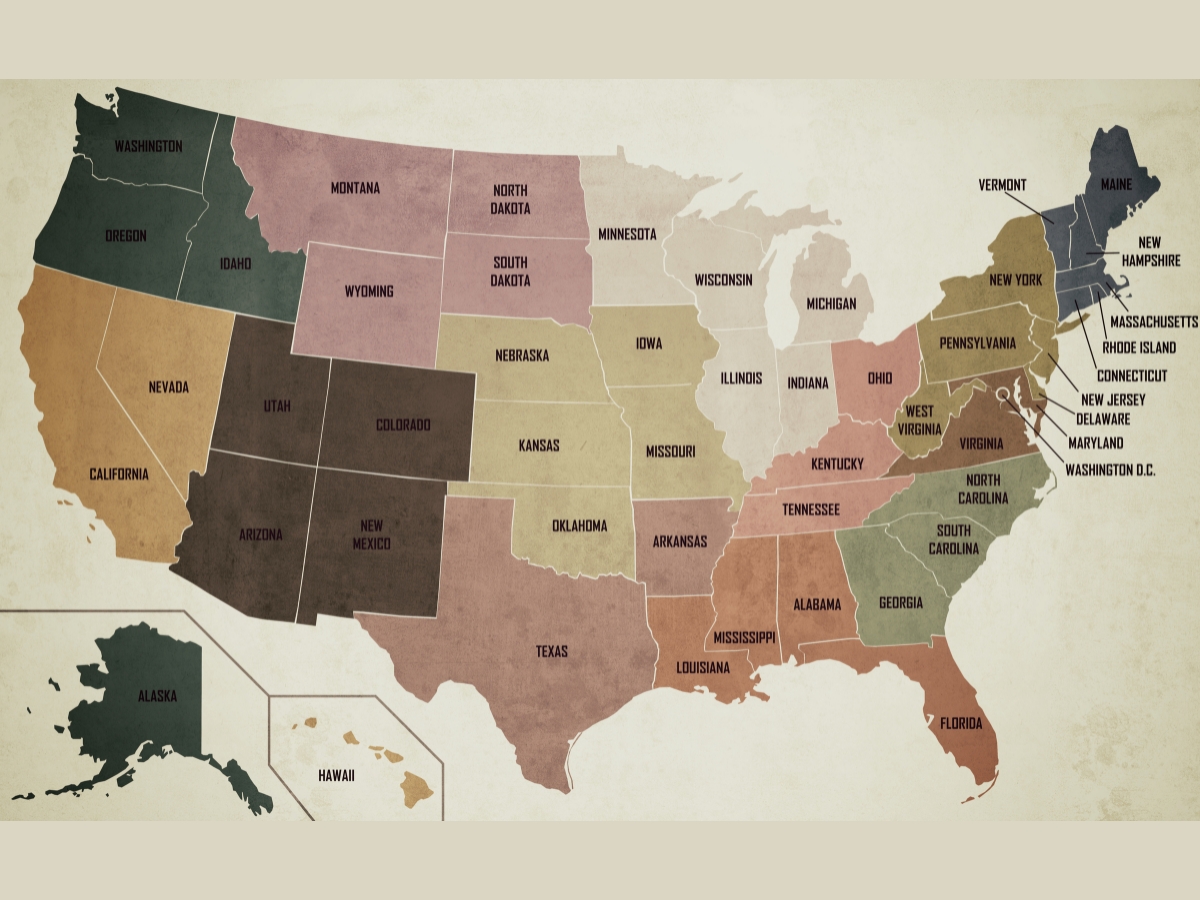
Major Cities and Metropolitan Areas
California is home to some of the largest and most populous cities in the United States. The state is divided into several metropolitan areas, each with its own unique culture and characteristics. In this section, we will discuss some of the major cities and metropolitan areas in California.
Los Angeles Metropolitan Area
The Los Angeles Metropolitan Area, also known as Greater Los Angeles or simply LA, is the largest metropolitan area in California and the second-largest in the United States. It includes the city of Los Angeles and surrounding areas such as Long Beach, Anaheim, and Santa Ana. With a population of over 13 million people, the LA metropolitan area is known for its diverse cultures, entertainment industry, and sprawling urban landscape.
San Francisco Bay Area
The San Francisco Bay Area, also known as the Bay Area, is a region that encompasses the cities and metropolitan areas surrounding the San Francisco Bay. It includes cities such as San Francisco, Oakland, and San Jose. The Bay Area is known for its innovation and technology industry, as well as its diverse cultural offerings and natural beauty.
San Diego County
San Diego County is a county in the southern part of California, bordering Mexico. The county includes the city of San Diego and surrounding areas such as Chula Vista and Oceanside. Known for its beautiful beaches and mild climate, San Diego County is a popular tourist destination and home to several military installations.
Sacramento
Sacramento is the capital city of California and is located in the northern part of the state. It is known for its historic landmarks, such as the California State Capitol building and Old Sacramento, as well as its proximity to the Sierra Nevada mountains and Lake Tahoe.
Other Metropolitan Areas
Other metropolitan areas in California include Fresno, Palm Springs, Ventura, and Riverside. Each of these areas has its own unique characteristics and attractions, ranging from the agricultural industry in Fresno to the desert climate and resorts in Palm Springs.
Overall, California is home to diverse cities and metropolitan areas, each with its own distinct culture and attractions. Whether you are looking for a bustling urban environment or a more laid-back coastal lifestyle, California has something to offer.

Natural Landscapes and Climate
California is a state with diverse landscapes and climates. From the mountains in the north to the deserts in the south, California has a lot to offer in terms of natural beauty.
The Sierra Nevada mountain range runs through the eastern part of California and is home to Yosemite National Park. Yosemite is famous for its stunning granite cliffs, waterfalls, and giant sequoia trees. The park’s climate varies depending on the elevation, with colder temperatures at higher elevations.
The central valley of California is a vast agricultural region that stretches for hundreds of miles. The valley is surrounded by mountain ranges on both sides and is known for its hot and dry summers. The Napa Valley, located in the northern part of the valley, is a world-renowned wine region.
The coast of California is home to beautiful beaches and scenic coastal drives. Marin County, just north of San Francisco, is known for its rugged coastline and stunning views of the Pacific Ocean. The Redwood Forest, located in the northern part of the state, is home to some of the tallest trees in the world.
The Mojave and Sonoran Deserts are located in the southern part of California. Joshua Tree National Park is located in the Mojave Desert and is known for its unique rock formations and Joshua trees. Death Valley, located in the eastern part of the state, is the hottest and driest place in North America.
Lake Tahoe, located in the Sierra Nevada mountains, is a popular destination for skiing and other outdoor activities. The area around the lake has a subarctic climate, with cold and snowy winters.
Overall, California’s diverse landscapes and climates make it a unique and beautiful state to explore. Whether you’re interested in mountains, deserts, beaches, or national parks, California has something for everyone to enjoy.
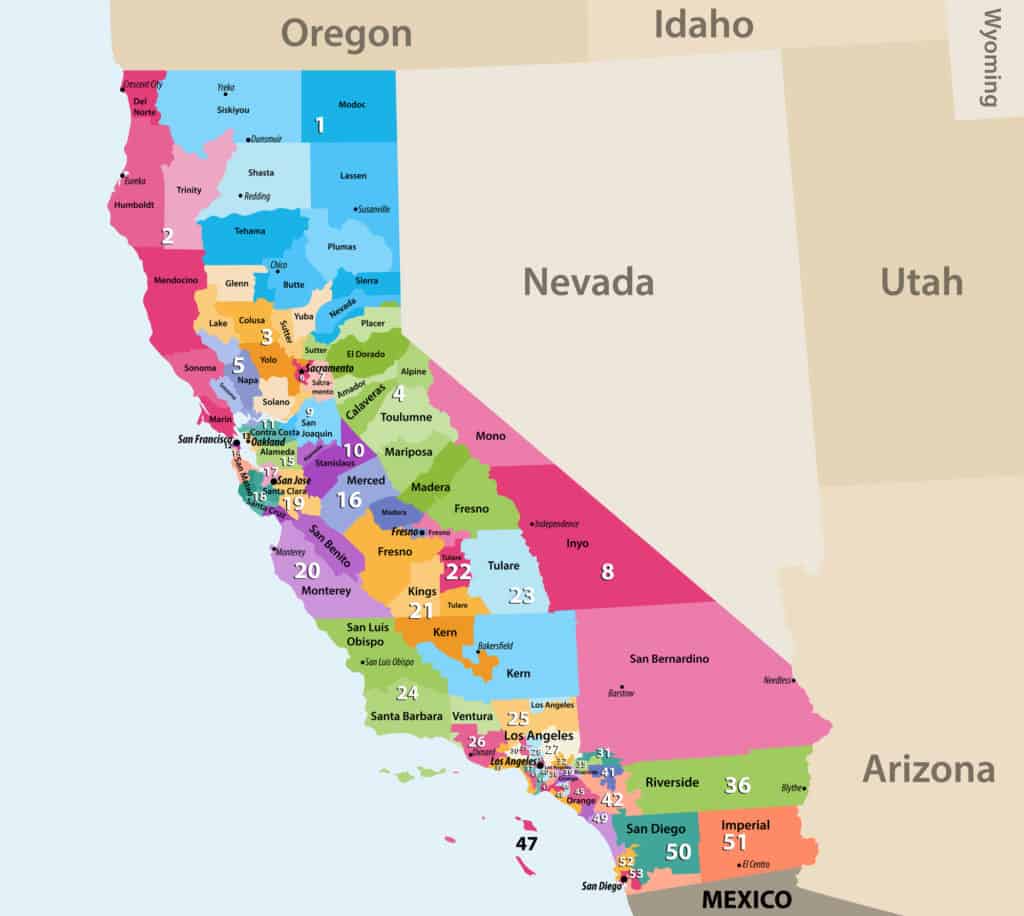
Population and Urban Areas
California is the most populous state in the United States, with an estimated population of 39.5 million as of 2023. The state’s population has been growing steadily over the years, with an increase of 6.1% from the 2010 census to the 2020 census.
California is home to several urban areas, including Los Angeles, San Francisco, San Diego, San Bernardino, Sacramento, San Jose, Fresno, Concord, and Bakersfield. These urban areas are densely populated and offer a variety of cultural and recreational opportunities.
In addition to its urban areas, California also has many suburban areas, such as the Napa Valley, Central Coast, Inland Empire, and Santa Barbara. These areas offer a more relaxed and suburban lifestyle, while still being close to urban areas and their amenities.
It is worth noting that California shares a border with Mexico, and has a significant Hispanic population. According to the 2020 census, 39.4% of California’s population identifies as Hispanic or Latino.
California is also home to 58 counties, each with its own unique characteristics and culture. The state’s megapolitan area, which includes Los Angeles, Riverside-San Bernardino, and San Diego, is the largest in the United States, with a population of over 22 million.
Overall, California’s population is diverse and growing, with a mix of urban, suburban, and rural areas.
California’s Economy
California’s economy is the largest in the United States and is only surpassed by a handful of industrialized countries. According to the Bureau of Economic Analysis and the Bureau of Labor Statistics, California’s Gross State Product (GSP) was $3.598 trillion in 2022, making it the largest sub-national economy in the world.
The San Francisco Bay Area is an economic powerhouse in California, with a GDP of $535 billion in 2020. The region is home to some of the world’s most valuable technology companies, including Apple, Facebook, and Google. The area’s economy is also heavily influenced by the transportation industry, with the Port of Oakland being one of the busiest ports in the country.
Manufacturing is also a significant contributor to California’s economy, with the state being the largest manufacturing state in the country. The manufacturing sector employs over 1.3 million people in California and generates over $300 billion in annual output.
Silicon Valley, located in Santa Clara County, is widely regarded as the epicenter of the technology industry. The region is home to many of the world’s largest technology companies, including Apple, Facebook, and Google. The area’s economy is driven by innovation, with many of the world’s most innovative companies being founded in Silicon Valley.
In conclusion, California’s economy is diverse and robust, with a significant contribution from the technology and manufacturing sectors. The San Francisco Bay Area and Silicon Valley are major economic drivers, with the transportation industry also playing a crucial role.
Entertainment and Tourism
California is a hub of entertainment and tourism, with plenty of options for visitors to choose from. Whether you are looking for adventure, relaxation, or cultural experiences, California has something to offer.
Entertainment-wise, California is home to Hollywood, the global center of the film industry. Visitors can take studio tours, visit the Walk of Fame, and even catch a glimpse of their favorite stars. Universal Studios Hollywood is also a popular theme park that offers thrilling rides and attractions based on popular movies and TV shows.
For families, Disneyland in Anaheim is a must-visit destination. This iconic theme park offers a variety of attractions and entertainment for all ages. California Adventure, located right next door, is also a great option for thrill-seekers and fans of Pixar movies.
Wine country is another popular attraction in California. The state is home to some of the world’s best wineries, including Napa Valley and Sonoma. Visitors can take guided tours of vineyards, participate in tastings, and learn about the wine-making process.
Getting around California can be a challenge due to traffic, but there are several transportation options available. BART (Bay Area Rapid Transit) is a convenient way to travel around the San Francisco Bay Area, while driving is the most common mode of transportation for those visiting Southern California.
For those looking for outdoor activities, Huntington Beach and Laguna Beach offer beautiful stretches of coastline for surfing, sunbathing, and beach volleyball. Highway 1 is also a scenic drive that offers breathtaking views of the Pacific Ocean and California’s rugged coastline.
Catalina Island, located off the coast of Southern California, is a popular day trip destination. Visitors can take a ferry to the island and enjoy activities such as snorkeling, kayaking, and hiking.
Overall, California’s entertainment and tourism options are diverse and plentiful, making it a top destination for visitors from around the world.
Historical Context and Origin
California is a state located on the West Coast of the United States. The state is bordered by Oregon to the north, Nevada to the east, and Arizona to the southeast. Historically, California was a part of the Spanish colonial empire from the 16th century until Mexico gained independence from Spain in 1821. The state was then a part of Mexico until the Mexican-American War from 1846 to 1848, which resulted in California becoming a part of the United States.
During the 1850s, California was a pro-slavery state, which caused tensions with the Union during the Civil War. However, California remained a part of the Union and played a significant role in the war effort. The state was also a major contributor to the Union’s economy during the war, providing gold and other resources.
The origin of California’s name comes from a fictional island paradise described in the 16th century Spanish romance Las Sergas de Esplandian. The name was popularized by Spanish explorers who first came to this part of North America’s Pacific Coast. The state’s history is rich and diverse, with many different cultures and peoples contributing to its development.
Today, California is the most populous state in the United States and is known for its diverse economy, beautiful landscapes, and cultural diversity. The state is home to many major cities, including Los Angeles, San Francisco, and San Diego, as well as numerous natural wonders such as Yosemite National Park and the Mojave Desert.
In terms of politics, California has historically been a Democratic stronghold, with the state voting for Democratic candidates in every presidential election since 1992. The state also has a significant influence on national politics due to its large population and strong economy. Many important political figures, including former Presidents Ronald Reagan and Richard Nixon, have hailed from California.
Overall, California’s history is complex and multifaceted, with many different factors contributing to its development and growth over the years. From its Spanish colonial origins to its role in the Civil War and beyond, California has played an important role in shaping the history of the United States and the world.
Frequently Asked Questions
What are the five regions of California?
California is commonly divided into five regions: the North Coast, the San Francisco Bay Area, the Central Valley, the Sierra Nevada, and Southern California.
What is the population of California?
As of 2021, California has an estimated population of over 39 million people, making it the most populous state in the United States.
What is the cultural difference between Northern and Southern California?
Northern and Southern California have distinct cultural differences. Northern California tends to be more liberal and progressive, with a focus on technology and innovation. Southern California is known for its entertainment industry, beaches, and more laid-back lifestyle.
What mountain range runs through California?
The Sierra Nevada mountain range runs through California, stretching over 400 miles from north to south.
Was California considered a Northern or Southern state during the Civil War?
During the Civil War, California was considered a Northern state due to its location and political alignment with the Union.
Is Los Angeles located in Northern or Southern California?
Los Angeles is located in Southern California, specifically in the region known as the Greater Los Angeles Area.
